A New Era of Exterior Sealants
Sealants in the Field
As mentioned previously, sealants are a vital part of any building’s construction. They help protect the building envelope from unwanted air and water intrusion. Because the building envelope is a system, it’s best to make sure the whole system is sealed properly during construction. Construction of a building typically starts with the foundation, the floor joists, and a subfloor. High-quality adhesives provide exceptional seals between building materials that make up the entire exterior of the building. This includes subfloors and baseboards, siding and brick walls, and more. While walls and floors are solid structures, the areas where they meet create gaps that must be filled.
While the technology surrounding sealants has been slow to change over the years, modern advances in technology have allowed engineers and scientists to create new sealants that reduce shrinkage, are more UV resistant, and also are more resistant to dirt and dust collection. These new and improved building materials should be used in new construction, and they also can be used in building repairs to ensure the most effective and long-lasting seal in the building envelope.
When applying approved sealants in the field, it’s important to properly prep the surface area. The area should be clean, dry, and free of all contaminants, including dust, dirt, old caulking or sealants, paint, and any other materials that could prevent the sealant from adhering to the building materials.
To determine what types of materials the sealant can adhere to, refer to the ASTM C920 classification. Each material should have a rating and classification that clearly states what materials are ideal for the sealant. Matching the right sealant to the right joint is the key to ensuring the building is properly sealed to create a durable and sustainable structure. To better understand this, let’s explore the different types of joints in more detail.
Fillet Joint
A fillet joint is formed when two surfaces come together to form a right angle. The dimensions of A and B must be a minimum of ¼ inch. The sealant bead must be tooled to ensure contact to both substrates during application with a nozzle or spatula. Dimension C must be a minimum of ⅜ inch. If either dimension A or B is less than ¼ inch, the sealant’s adhesion performance and ability to sustain joint movement capability will be compromised. The reduced sealant volume in the space will diminish the sealant’s ability to accommodate joint movement.
If dimension C is under the standard ⅜ inch minimum, overtooling could potentially reduce the sealant volume necessary to accommodate joint movement.
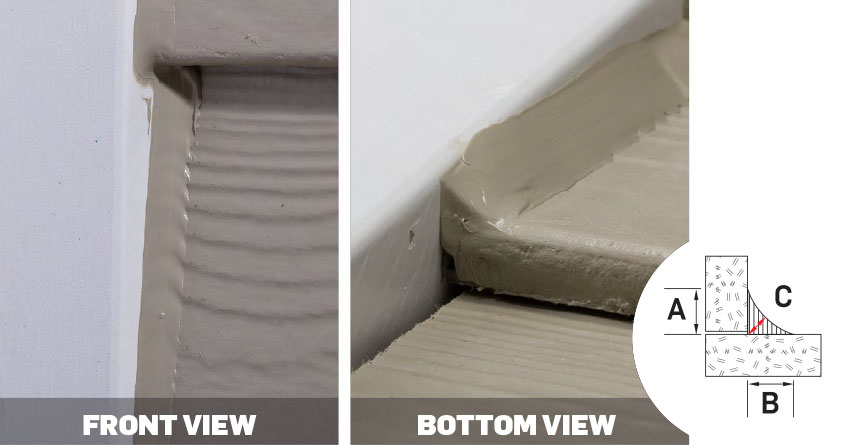
A fillet joint is formed when two surfaces come together to form a right angle. The sealant used to join these two surfaces is triangular in shape. This is an example of a fillet joint sealed using best practices.
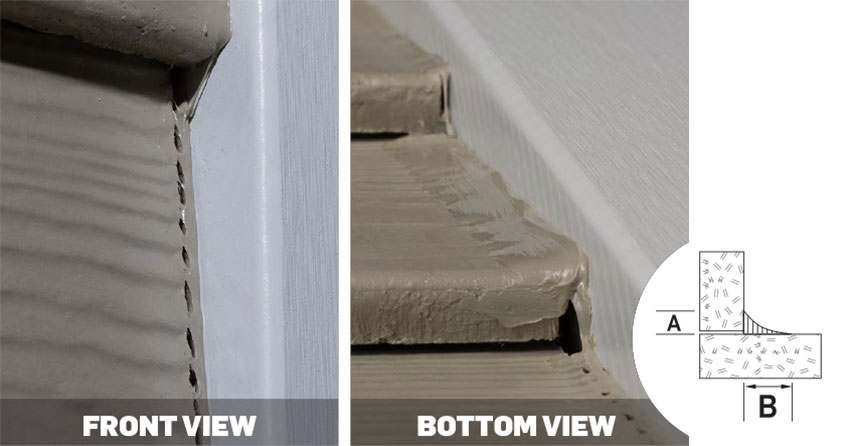
This is an example of an unreliable fillet joint with an unbalanced bead.
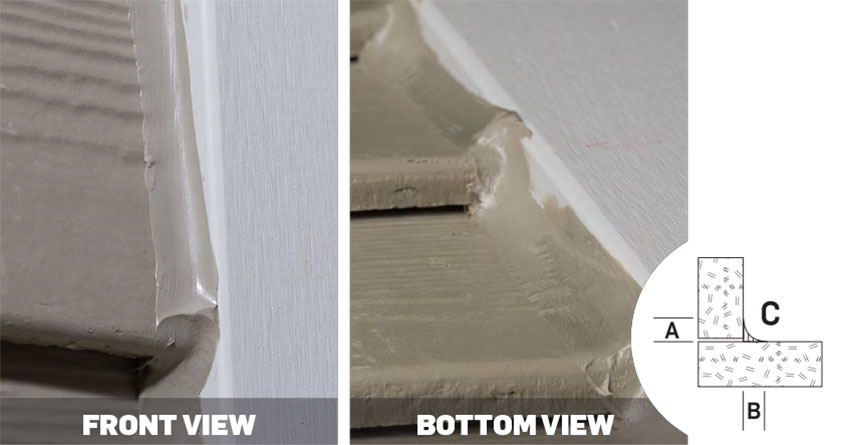
This is an example of an unreliable fillet joint with an overtooled bead.
Control Joint
A control joint is formed when two similar or dissimilar materials meet or when substrates do not form a right angle. This joint will require both a backer rod and sealant for a proper application. Dimension A must be a minimum of ⅜ inch or a maximum of ⅝ inch. Dimension B must be a minimum of ¼ inch deep. Dimension C can be a maximum of ½ inch. Inject the bead as a concave shape. Use a tooling spatula that is sized to the joint width.
If Dimension C is beyond standard maximum depth, then the joint movement will be weakened and may cause fissures and fractures. If Dimension B is beyond the standard maximum depth, the sealant will be slow to cure and may compromise sealant performance. If Dimension B is below the standard depth, excessive sealant may be removed due to over-tooling, and the sealant will not provide optimum performance.
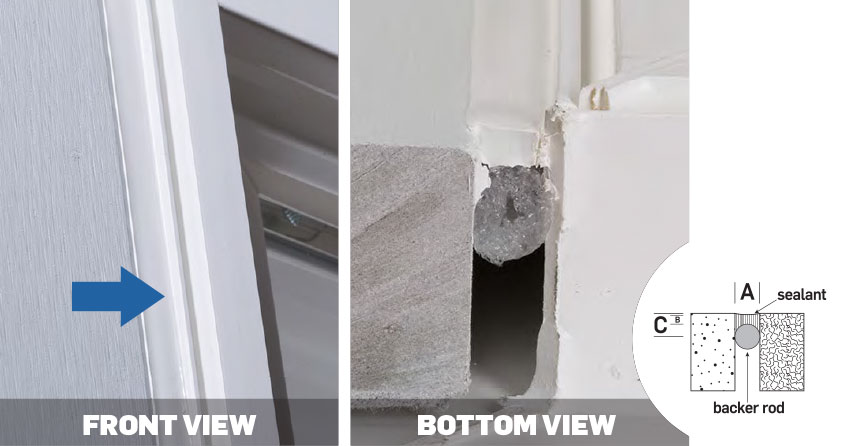
A control joint is formed when two similar or dissimilar materials meet or when substrates do not form a right angle. This joint will require both a backer rod and sealant for proper application. This is an example of a control joint sealed using best practices.
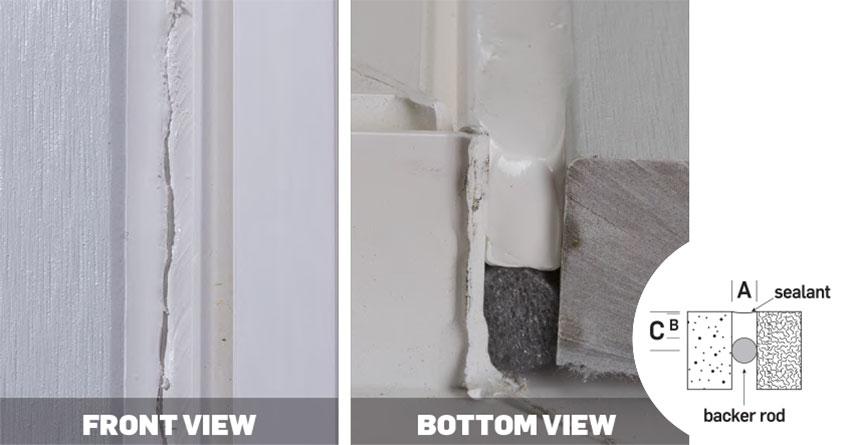
This is an example of an unreliable control joint with an unbalanced bead.
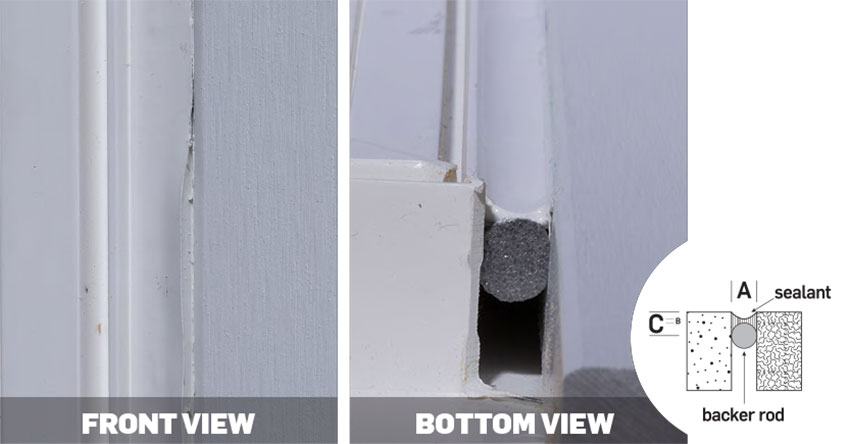
This is an example of an unreliable control joint with an overtooled bead.
Dynamic Joint
A dynamic joint is formed when sealant joints exhibit a high level of expansion and contraction due to fluctuation within the substrate and the building design. Dimension A must be a maximum width of ⅝ inch. Dimension B must be ⅜ inch in depth, and Dimension C must be a maximum depth of ½ inch. When applying the bead, use a concave shape. Use of a tooling spatula is recommended.
If Dimension C is behind the standard maximum depth, it can debilitate joint movement and cause fissures and fractures. If Dimension B is beyond the standard maximum depth, the sealant will be slow to cure and it may compromise performance. If Dimension B is below the standard depth, excessive sealant may be removed due to over-tooling, and the shallow depth of the sealant will not provide optimum performance.
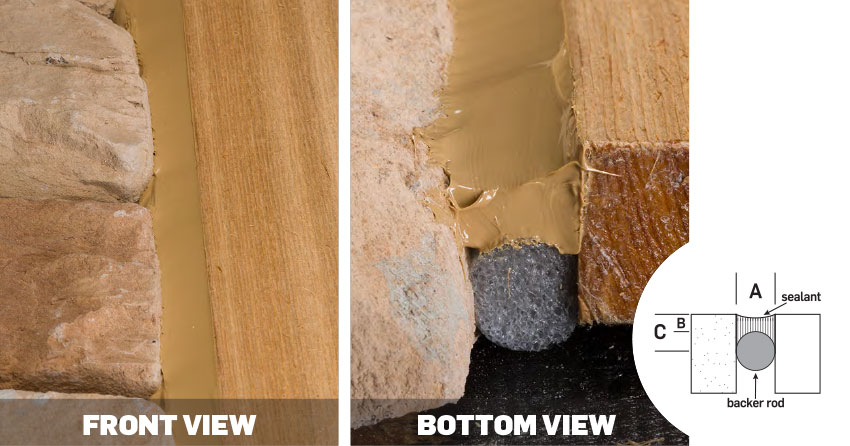
A dynamic joint is one that exhibits a high level of expansion and contraction due to fluctuation with substrate and building design. This is an example of a dynamic joint sealed using best practices.
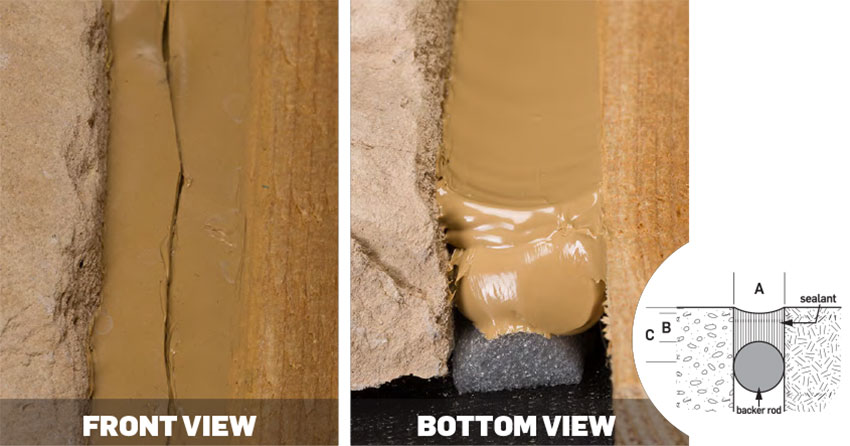
This is an example of an unreliable dynamic joint with an unbalanced bead.
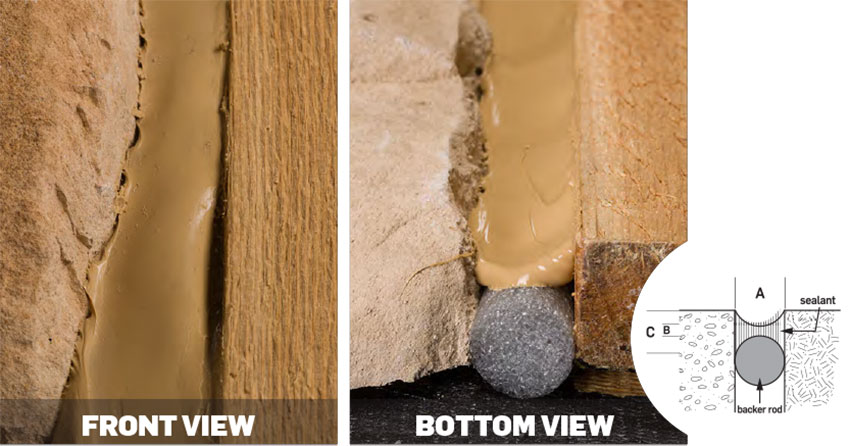
This is an example of an unreliable dynamic joint with an overtooled bead.









